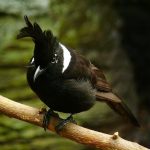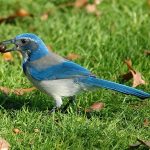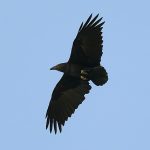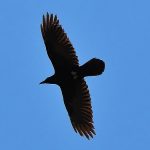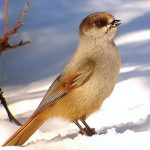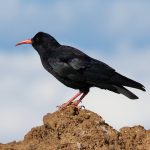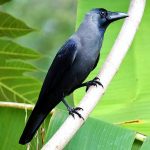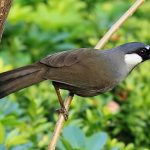Green jay

 |
| Photo by Dorgelis Alcocer (Facebook) |
Common name:
green jay (en); gaio-verde (pt); geai vert (fr); chara verde (es); grünhäher (de)
Taxonomy:
Order Passeriformes
Family Corvidae
Range:
This species is found in two separate population, one from southern Texas, in the United States, down to northern Honduras, and another from northern Venezuela and along the slopes of the Andes of Colombia, Ecuador and Peru down to central Bolivia.
Size:
These birds are 25-31 cm long and have a wingspan of 35-40 cm. They weigh 65-110 g.
Habitat:
The green jay is mostly found in tropical rainforests, both in lowlands and mountainous areas, moist scrublands and dry savannas, but also in high-altitude scrublands and dry scrublands. They are present from sea level up to an altitude of 3.000 m.
Diet:
They are omnivorous eating arthropods, small vertebrates, fruits, berries, seeds and nuts. Their prey includes beetles, grasshoppers, crickets, bugs, wasps, spiders, centipedes, small rodents, lizards and the eggs and young of small birds.
Breeding:
Green jays are monogamous and nest in a bulky but loose cup of sticks and thorny twigs, lined with rootlets, grass, moss, and sometimes leaves. The nest is placed in a dense tree or scrub, usually placed 2-5 m above the ground. The female lays 3-5 greenish-white eggs with dark spot, which she incubates alone for 17-18 days. The chicks are fed by both parents and fledge 19-22 days after hatching. The young may remain in the parental territory until the following breeding season, and may even help feed the next brood.
Conservation:
IUCN status – LC (Least Concern)
This species has a very large breeding range. There is no information regarding the trend of the global population, but the green jay is increasing and expanding in range in the United States.

